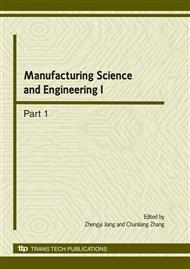p.1207
p.1212
p.1216
p.1223
p.1227
p.1235
p.1239
p.1243
p.1248
Debonding Analysis along a Softening FRP-Concrete Interface between Two Adjacent Cracks in Plated Beams
Abstract:
External bonding of fibre reinforced polymer (FRP) composites has become a common way for strengthening concrete members. The performance of the interface between FRP and concrete is one of the key factors affecting the behaviour of the strengthened structure. For this FRP-concrete structure, there are two types of debonding failures: plate end debonding and intermediate crack (IC) induced debonding. This paper presents an analytical solution for the second type debonding failures in FRP-concrete bonded joint model where the FRP plate is subject to tension at both ends. Both the strengthened beam and strengthening FRP are modeled as two linearly elastic Euler–Bernoulli beams bonded together through a thin adhesive layer. The debonding process of the FRP–concrete interface is discussed in detail, and closed-form solutions of bond slip, interface shear stress, and axial force of FRP in different stages are obtained. Parametric studies are further carried out to investigate the effect of the thickness of adhesive layer on the bond behavior of FRP–concrete interface.
Info:
Periodical:
Pages:
1227-1234
Citation:
Online since:
March 2010
Authors:
Price:
Сopyright:
© 2010 Trans Tech Publications Ltd. All Rights Reserved
Share:
Citation:


